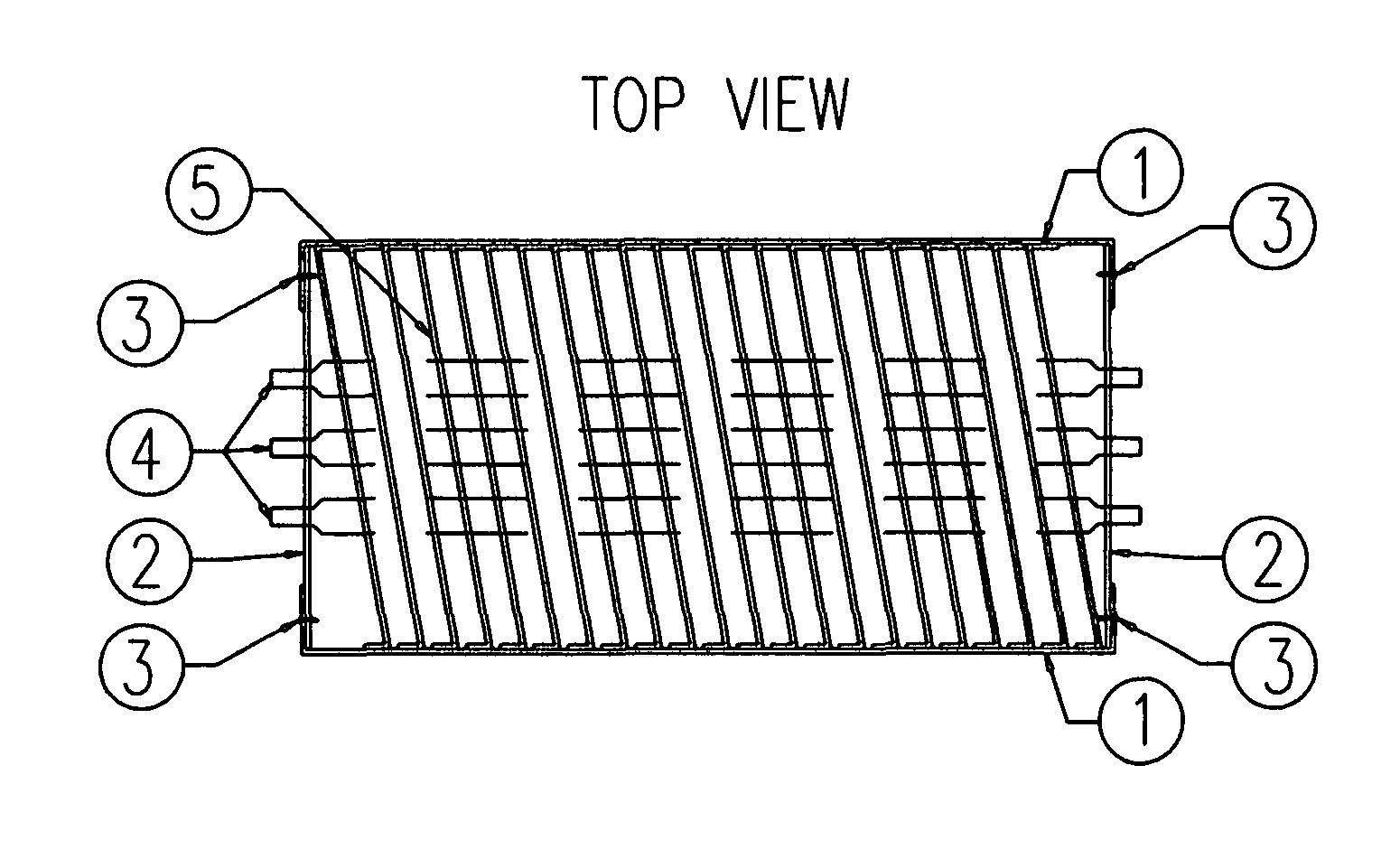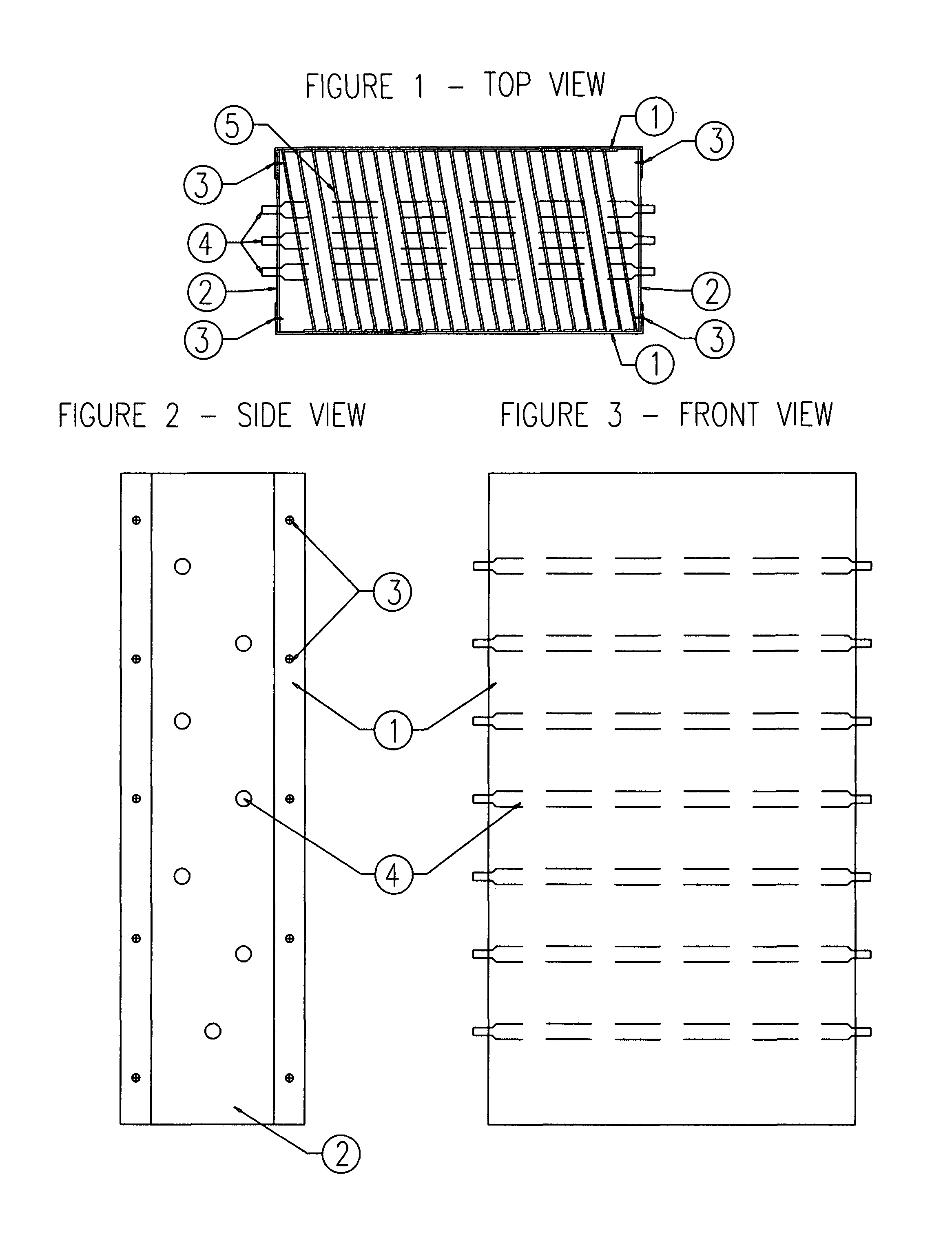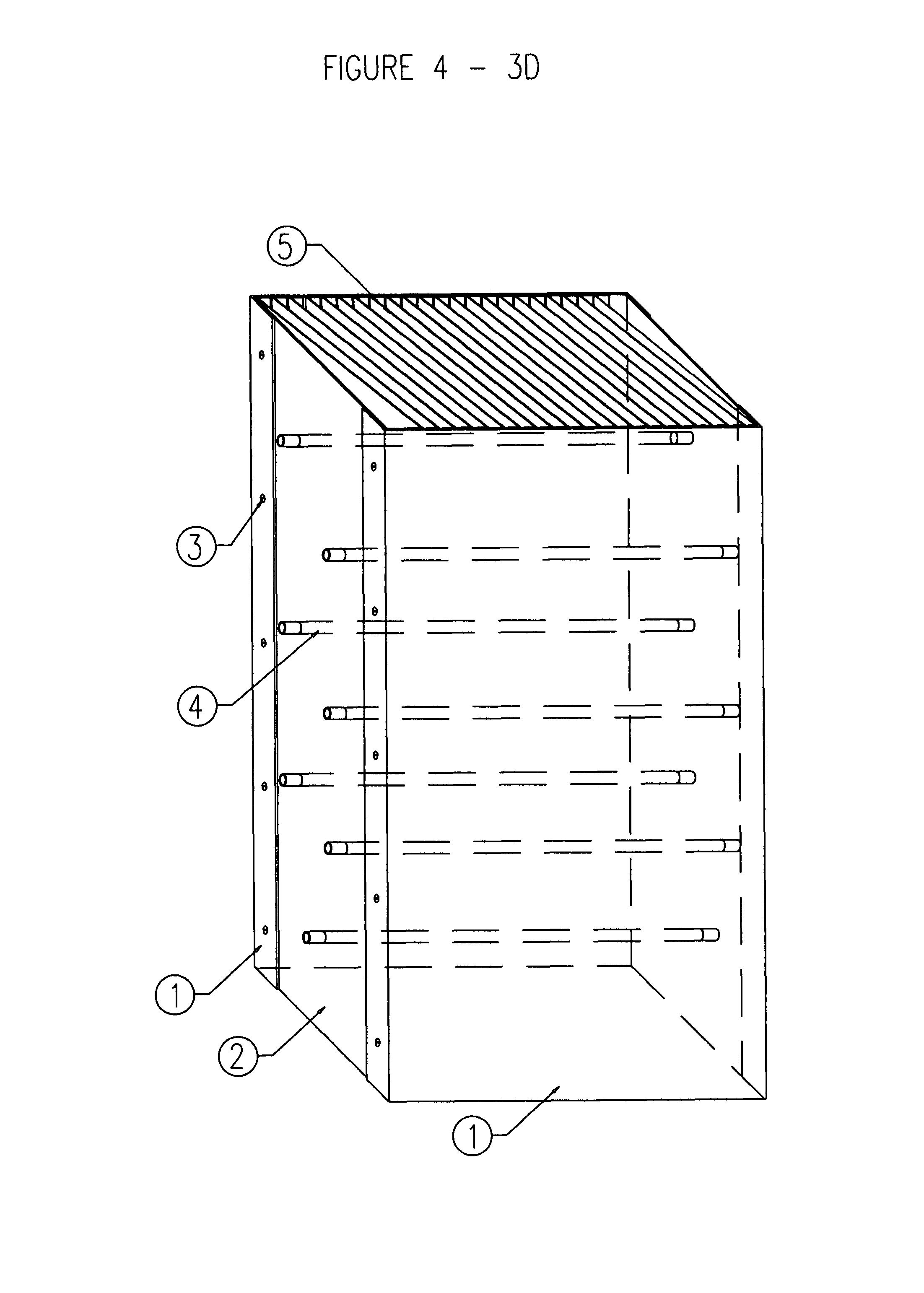Infrared heating mechanism and system
a technology of infrared heating and heating mechanism, which is applied in the field of infrared heating mechanism and system, and can solve problems such as inefficiency
- Summary
- Abstract
- Description
- Claims
- Application Information
AI Technical Summary
Benefits of technology
Problems solved by technology
Method used
Image
Examples
Embodiment Construction
[0008]Infra-Wave Technologies, LLC has designed and developed a new heater core, called ECOWAVE 1.2, that utilizes a combination of infrared light bulbs, metal dissipation plates, thermostatic switches and blower fans in a precise configuration to achieve a 94-96 degree heat rise over ambient temperatures with a minimal electrical consumption of 3.083 KW per hour. Our heater core can produce an optimal rise in ambient temperature with no risk of explosion from volatile gas or heating oil, no risk of carbon monoxide poisoning and will operate at a temperature that is below the point where any material in the heated area of the heater core can combust. The heater core can be used in a multitude of configurations such as a stand-alone space heater, hanging bay heater, wall mounted heater, electric fireplace, and a retrofit unit (either single, direct duct or stacked) into an existing forced air system. See FIGS. 6-12.
[0009]The principal behind our Infra-Wave Technologies, LLC heater co...
PUM
 Login to View More
Login to View More Abstract
Description
Claims
Application Information
 Login to View More
Login to View More - R&D
- Intellectual Property
- Life Sciences
- Materials
- Tech Scout
- Unparalleled Data Quality
- Higher Quality Content
- 60% Fewer Hallucinations
Browse by: Latest US Patents, China's latest patents, Technical Efficacy Thesaurus, Application Domain, Technology Topic, Popular Technical Reports.
© 2025 PatSnap. All rights reserved.Legal|Privacy policy|Modern Slavery Act Transparency Statement|Sitemap|About US| Contact US: help@patsnap.com



